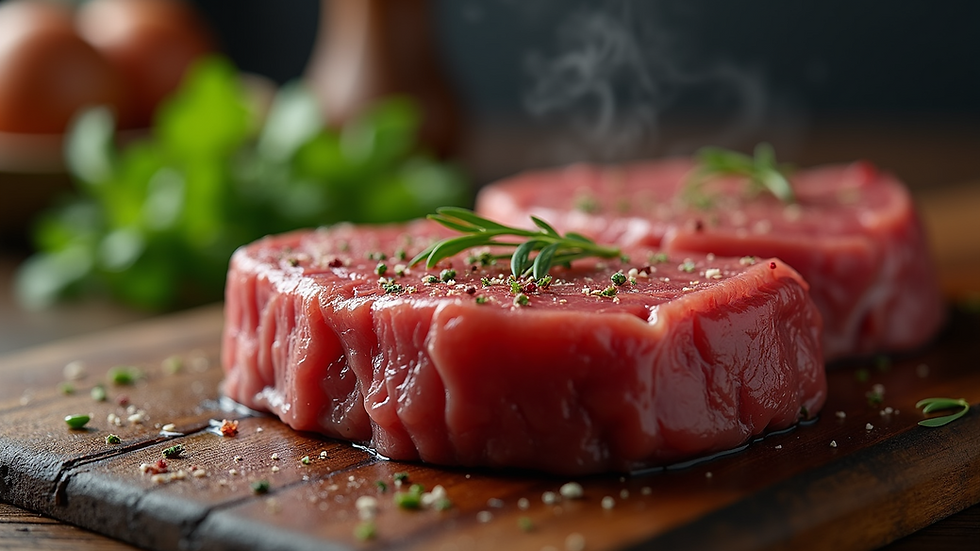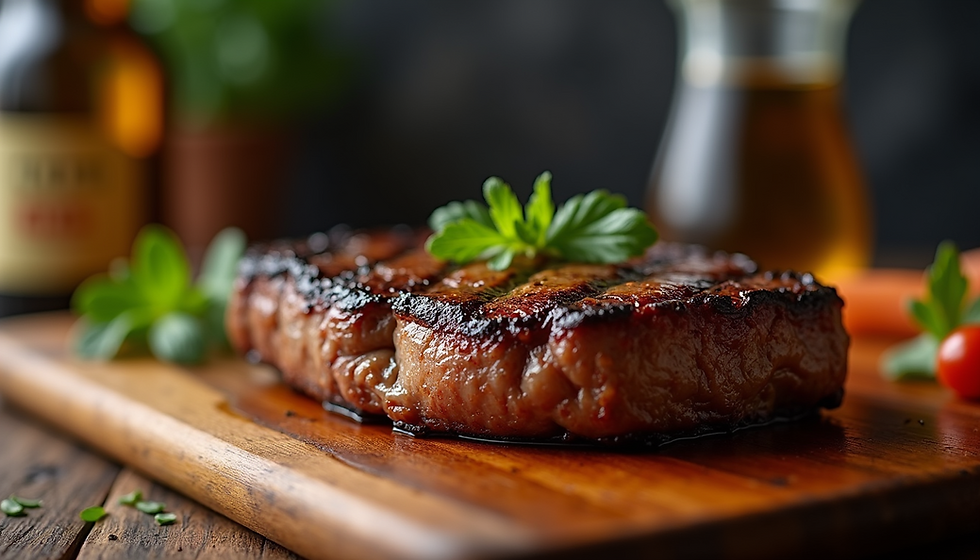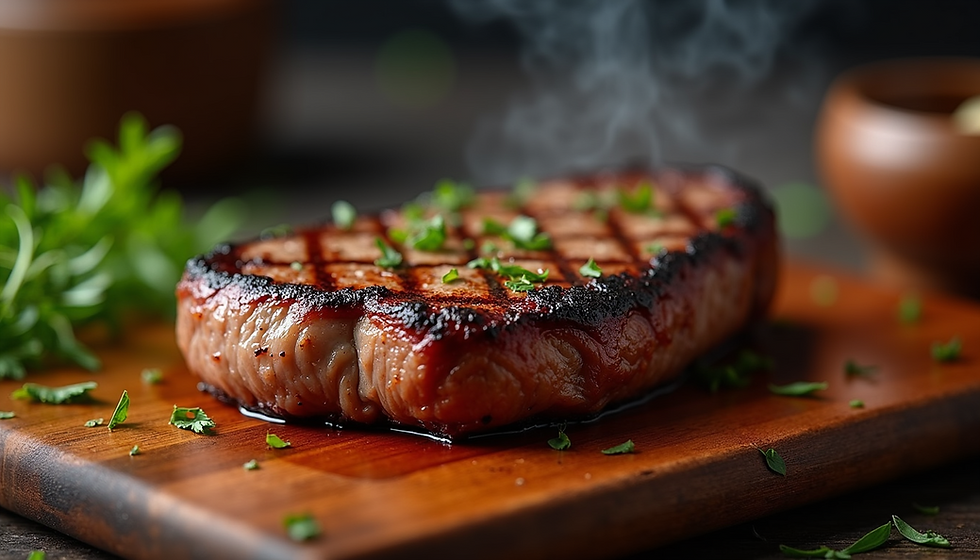The Art of Perfectly Cooked Steaks
- Team @ Ezy Click Answers
- Jun 3
- 4 min read
Cooking a steak might seem simple, but achieving perfection requires an understanding of technique, timing, and quality. Whether you're grilling at home or dining at a steakhouse, knowing how to cook a steak perfectly is an art. In this guide, we'll navigate through everything you need to know about cooking a steak that rivals the finest steakhouses.
Discovering the Steakhouse Experience
Steakhouses are famous for their delectable offerings and expert cooking techniques. They create an experience that goes beyond just eating; it's about savoring rich flavors and textures. A well-cooked steak usually features a perfectly seared exterior and a juicy interior, showcasing the balance of fat and meat.
While each steakhouse may have its signature style, many employ similar techniques. Learning these can elevate your own cooking. Investing in quality cuts, understanding different cooking methods, and mastering seasonings can transform a regular steak dinner into a gourmet experience.

Selecting the Right Cut of Meat
Choosing the right cut of steak is crucial. The type of steak you select determines not only taste but also the ideal cooking method. Here are some popular cuts:
Ribeye: Known for its marbling, ribeye is juicy and flavorful. It’s often the cut of choice for those who want rich taste.
Filet Mignon: This is the most tender cut but has less marbling. It’s perfect for those who prioritize tenderness over fat.
New York Strip: With a good amount of fat yet still meaty, this cut strikes a balance between flavor and tenderness.
.
Understanding how these cuts change in flavor and texture when cooked is essential to mastering steak preparation.
Preparing Your Steak
To achieve the best results, preparation is key. Start with high-quality meat, such as a hansa steak, and ensure they are at room temperature before cooking. This allows for even cooking throughout.
Seasoning: Season your steak generously with kosher salt and freshly cracked black pepper. Simple seasoning enhances the flavor without overpowering the meat.
Marinating (Optional): While seasoning can often suffice, marinating your steak for a few hours can add depth. A simple marinade can include olive oil, garlic, and herbs.
Letting It Rest: After seasoning, let the steak rest for about 30 minutes. This rest period allows the salt to penetrate and tenderize the meat.

Cooking Techniques
How you cook your steak can considerably affect the outcome. There are several methods, each with its own perks:
Grilling: This is a classic cooking method that adds a smoky flavor. Preheat the grill and make sure it’s very hot before placing the steak on it. Cook for about 4-5 minutes on each side for medium-rare.
Pan-Searing: Ideal for colder weather, use a heavy skillet. Heat oil in the pan until it shimmers. Place the steak in the pan without overcrowding. Sear each side for 3-4 minutes and use butter and herbs to baste while cooking for additional flavor.
Sous Vide: This method involves cooking steak in a water bath at a precise temperature. After sealing the steak in a bag, cook it in the water for 1-4 hours, then quickly sear it for a perfect crust.
Whichever method you choose, aim for the right internal temperature to achieve your desired doneness. Use a meat thermometer for accuracy.
Achieving the Perfect Doneness
Understanding steak doneness levels is essential. Each level offers different flavor nuances:
Rare: 120-125°F; cool, red center
Medium Rare: 130-135°F; warm, red center
Medium: 140-145°F; pink and firm center
Medium Well: 150-155°F; slightly pink center
Well Done: 160°F and above; no pink
For the best flavor and juiciness, aim for medium-rare to medium. Remember, the steak will continue to cook slightly once removed from the heat, so take it off the grill early.

Allowing the Steak to Rest
After cooking, let your steak rest for at least 5-10 minutes before slicing. This step is crucial as it allows the juices to redistribute throughout the meat. Slicing immediately would release these juices, leaving the steak dry.
When resting, cover the steak loosely with foil to keep it warm. This short waiting period intensifies flavor and results in a more succulent steak when you finally cut into it.
Elevating Your Steak Experience
Enhancing your steak with complementary flavors can take it to the next level. Here are some delicious ideas:
Sauces: Consider serving your steak with classic sauces like chimichurri, peppercorn, or a red wine reduction.
Sides: Pair your steak with sides that celebrate its flavors. Grilled vegetables, garlic mashed potatoes, or even a simple salad can work wonders.
Serving Temperature: A perfectly cooked steak should be served hot. Consider serving your steak on a preheated plate to keep it warm longer.
Rather than simply preparing a meal, create a dining experience. The joy of eating perfectly cooked steak lies in how it’s not just about the meat but the entire setting, ambiance, and accompaniments.
The Gourmet Experience at Home
Cooking steak at home can lead to a gourmet experience that rivals any steakhouse. By following these steps and investing your time in the process, you can create unforgettable meals. Master the techniques outlined here, and you will be well on your way to enjoying perfect steaks.
Plus, with the availability of premium cuts from places like hansa steak, it’s never been easier to bring gourmet flavors to your kitchen.
By understanding selection, preparation, cooking methods, and presentation, you can confidently invite friends and family for a steak night to remember. Get that grill or skillet ready; it’s time for steak!




Comments